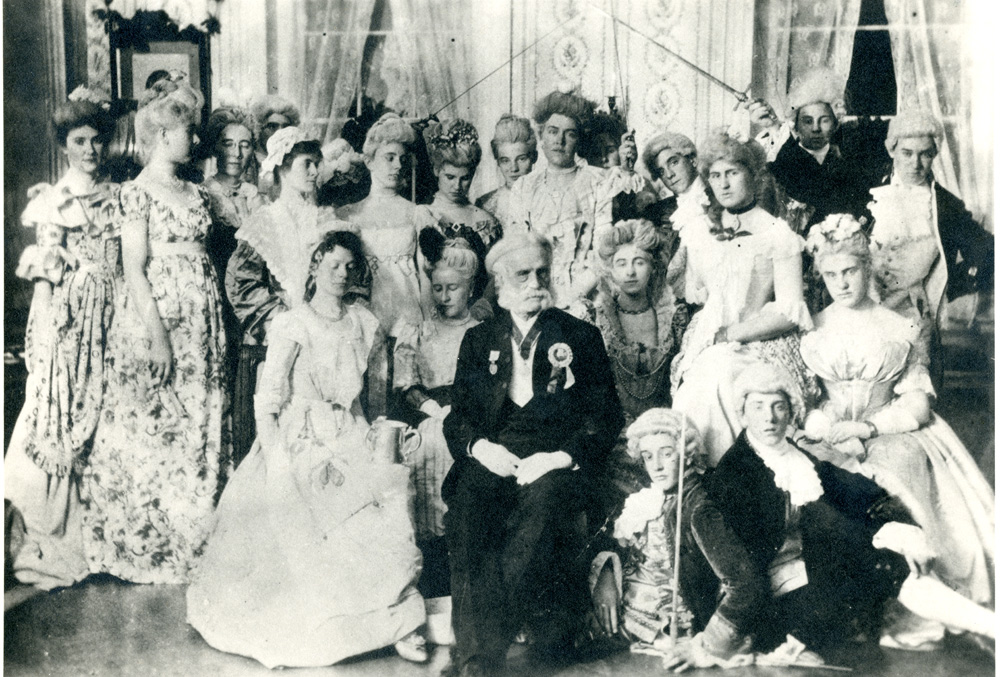
This 1901 Christmas party, thrown at Morven 200 years after Richard Stockton “the Settler” first came to Princeton, recreated and romanticized the extravagance of Princeton’s colonial past.
Collection of the Historical Society of Princeton
Wealth, patriotism, and slavery in the region’s new elite

This 1901 Christmas party, thrown at Morven 200 years after Richard Stockton “the Settler” first came to Princeton, recreated and romanticized the extravagance of Princeton’s colonial past.
Collection of the Historical Society of Princeton
This section is perhaps the most symbolic of Princeton’s changing social and economic landscape in the middle of the 18th century. As some Princetonians grew increasingly comfortable and their endeavors increasingly profitable, they began displaying their status in the design of their homes.
Elite families were at a luxury to design houses with style in mind, citing stately Georgian influences in contrast to vernacular colonial cottages. Even their farms ran differently. Unlike the yeoman, “gentleman farmers” were not focused on subsistence and survival; instead, they took up farming as a hobby, running what they often called “experiments” on their land.
These farms also operated differently in their wider use of slave labor. Most of the houses in this section were home to enslaved people, often as many as seven or eight at a time. New Jersey was the last northern state to abolish slavery, and then only through gradual procedures. As a result, the last enslaved people in New Jersey were held as late as 1865.
The builders of these homes are, indeed, some of early Princeton’s most famous patriots. There are politicians and military men alike, including two signers of the Declaration of Independence. Their households offer an important lens into the central contradiction of many American revolutionaries - their professed values of liberty and equality existed side-by-side with slavery.
Buildings:
Mansgrove
Benjamin Clarke House
Morven
The Barracks
Castle Howard
Tusculum Farm
Olden Manor